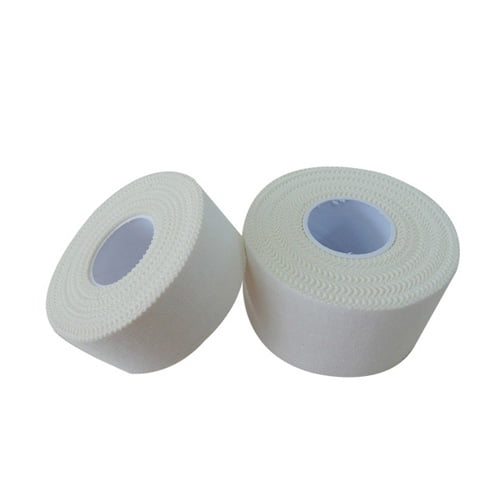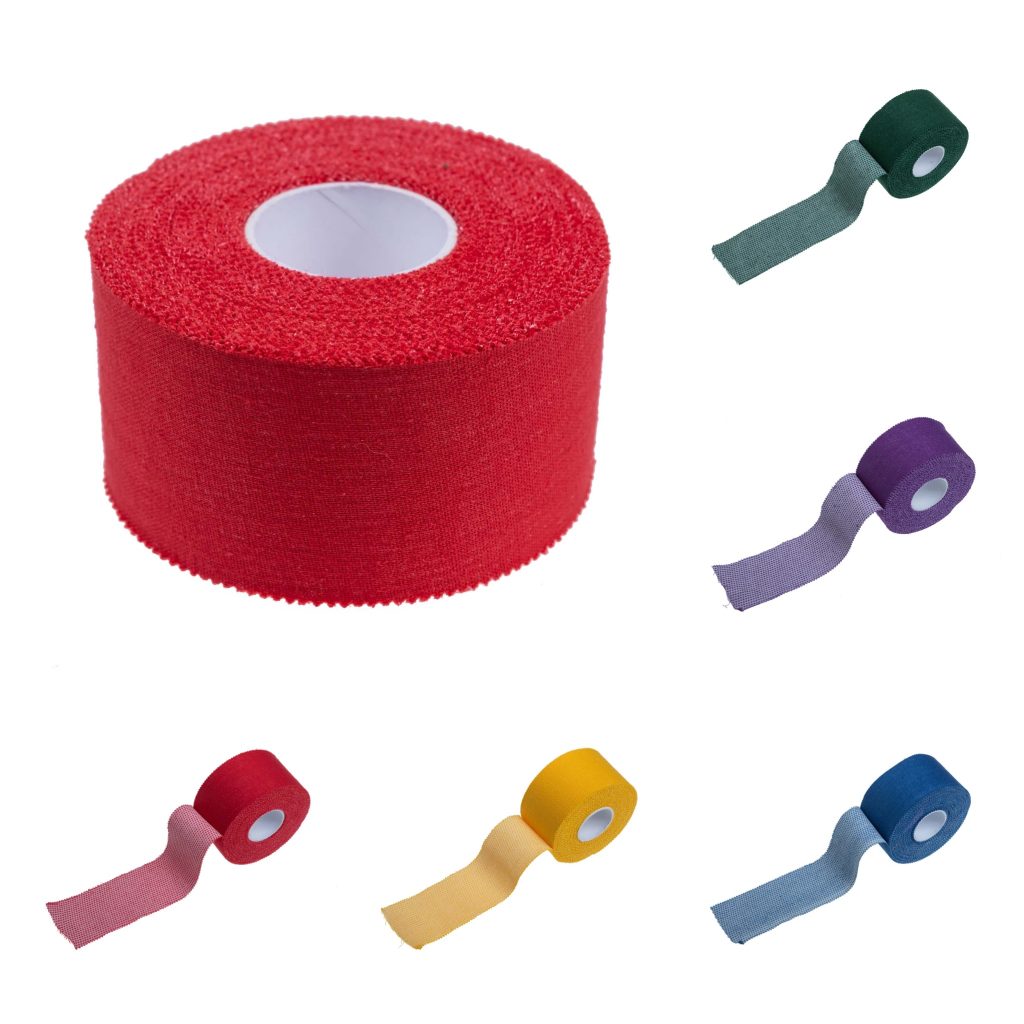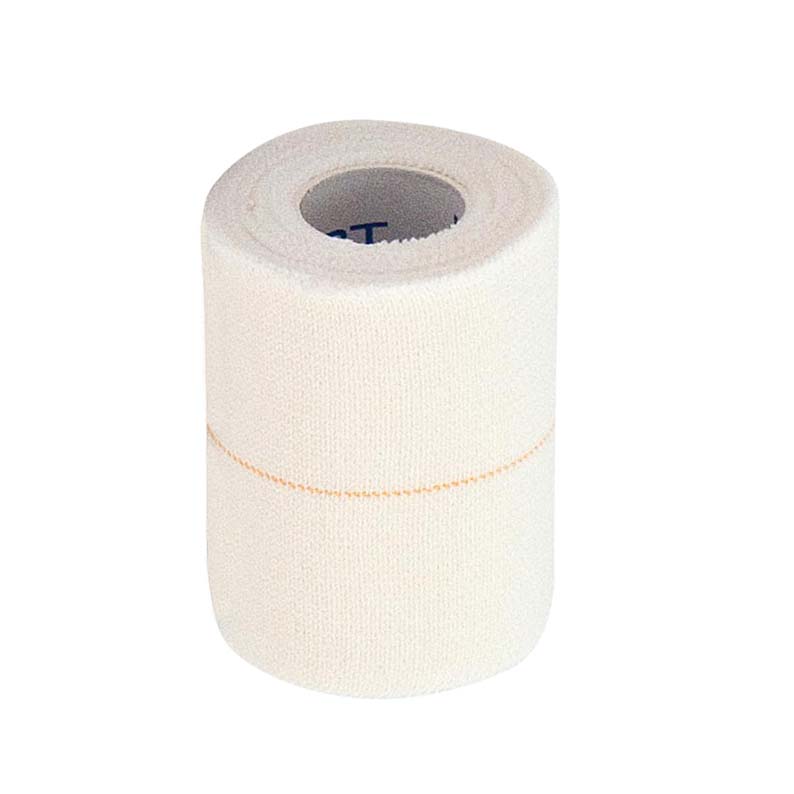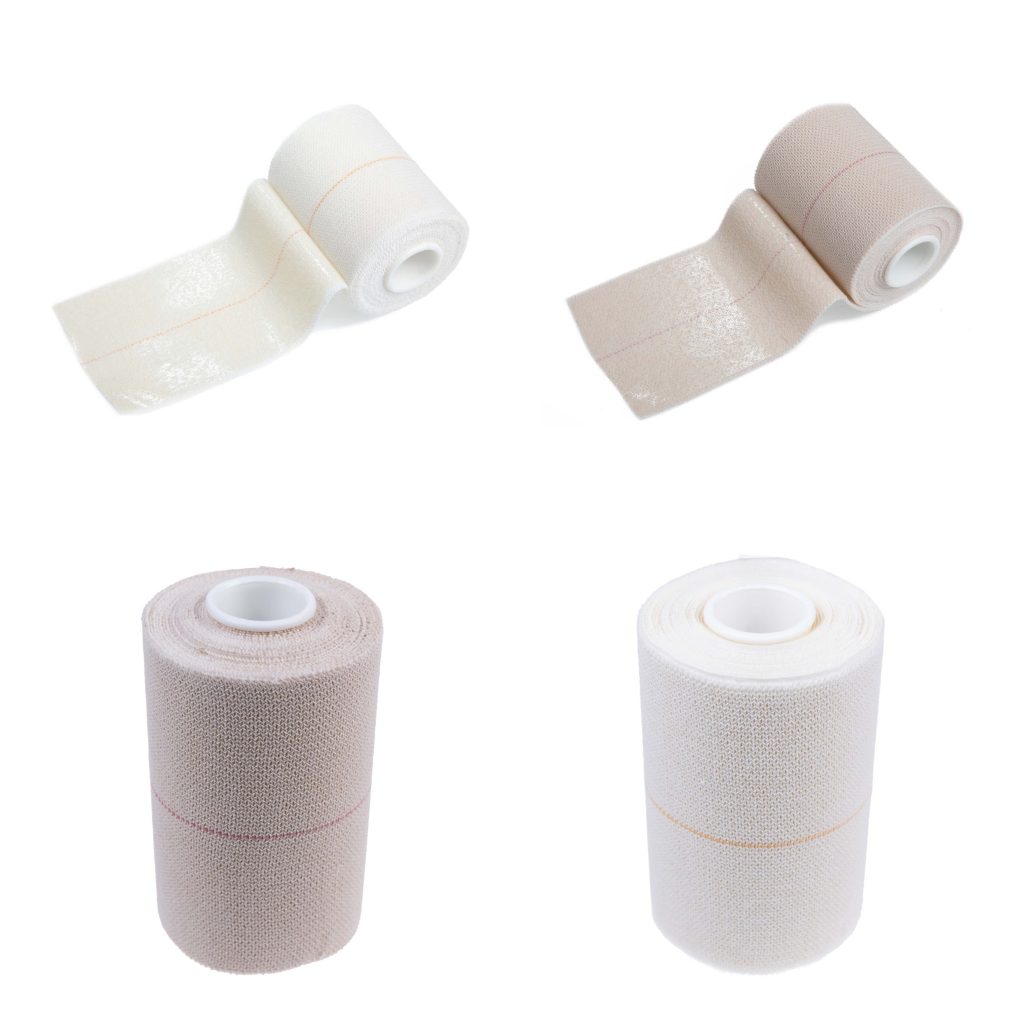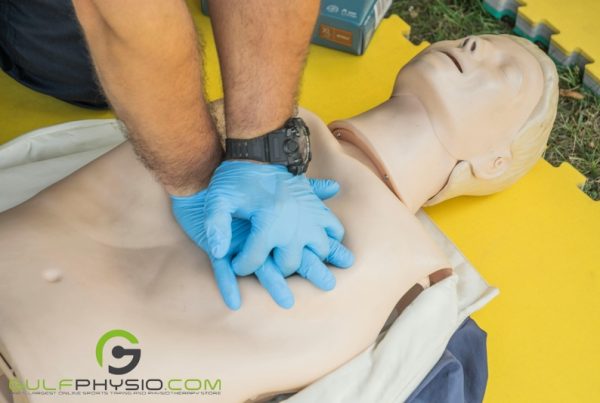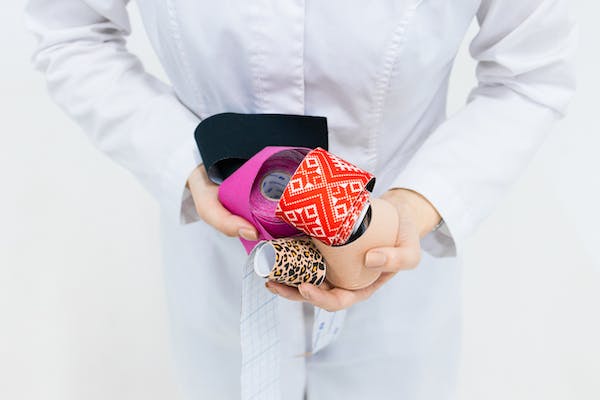
So, you decided to try out for your local football or rugby union. You’re enthusiastic about this new venture of yours, but you’re still a beginner. While practicing, you notice that your legs get tired easily. Since you want to be better, you look online for possible solutions.
Then, you discover sports medicine tapes and their uses. Even with this revelation, you’re still not sure which bandage to use for your thighs. If that’s the case, this article is for you. Let’s dive into the types of sports medicine tapes and which is the best fit for you.
The Five Main Types of Sports Medicine Tapes
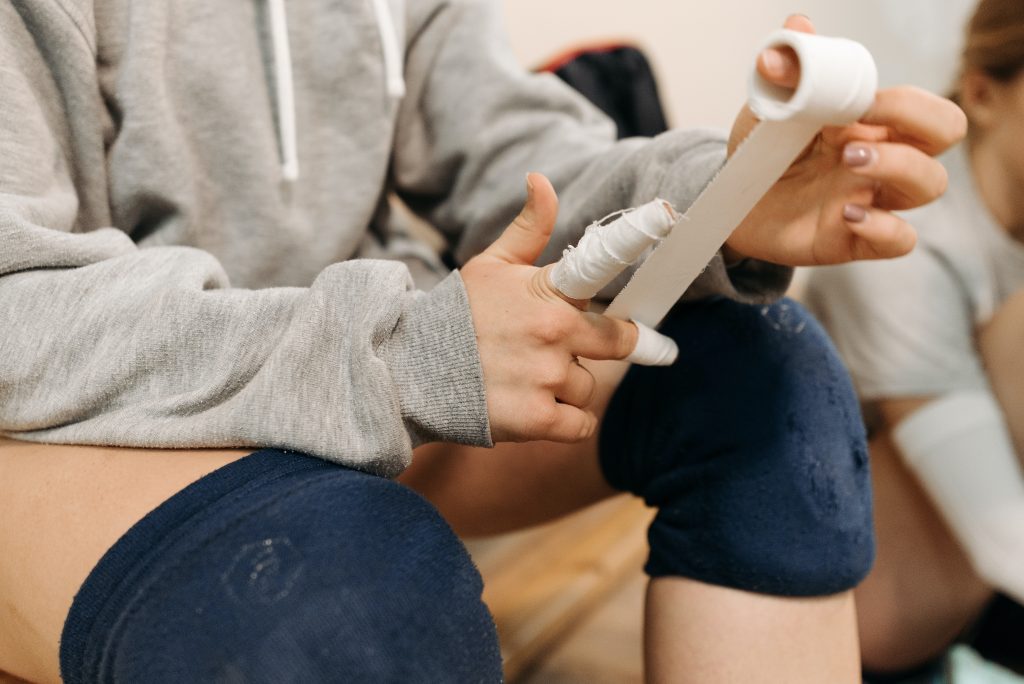
The five main types of sports medical tapes are adhesive. These are zinc oxide tape, rigid tape, elastic adhesive tape, cohesive bandage, and tear-light tape.
Zinc Oxide Tape
You might know zinc oxide tape by its many names: athletic tape, athletic trainer’s tape, or sports tape. When somebody mentions the tape you’ll use for any sports activities, people would automatically assume zinc oxide tape. It’s made up of long sheets of cotton fabric as the base and zinc oxide as glue, which provides a solid grip on your skin.
Because of the strength of the zinc oxide glue, it does remove your hair when you peel it off your skin. Plus, like most sports tapes, the woven cotton fabric is not that waterproof. Another one of its features is the presence of serrated edges, which helps if you want to tear it by hand.
Zinc oxide tape is put into two other categories: for athletic use and medical use.
For Athletic Use
The zinc oxide tape for athletic purposes is distinguishable from its color alone. It comes in a wide range of colors, from red to purple. Some versions are also porous or punctuated with holes. It’s either for breathability or as an easier way to remove the tape.
When using zinc oxide tape in this way, you put it directly on your skin. It is for compression.
For Medical Use
Zinc oxide tape is the way to go when you require a bandage or tape for any external wounds. Not only does it keep your scrapes safe from any more damage, but it also aids in the fast healing of wounds. Particularly, it’s very useful for skin and soft tissue injuries.
Medical-grade zinc oxide tape is not as colorful as the ones for athletic uses. Mostly, these tapes come in white or brown, with brown being closer to flesh color. Not to mention, it won’t be porous.
Rigid Tape
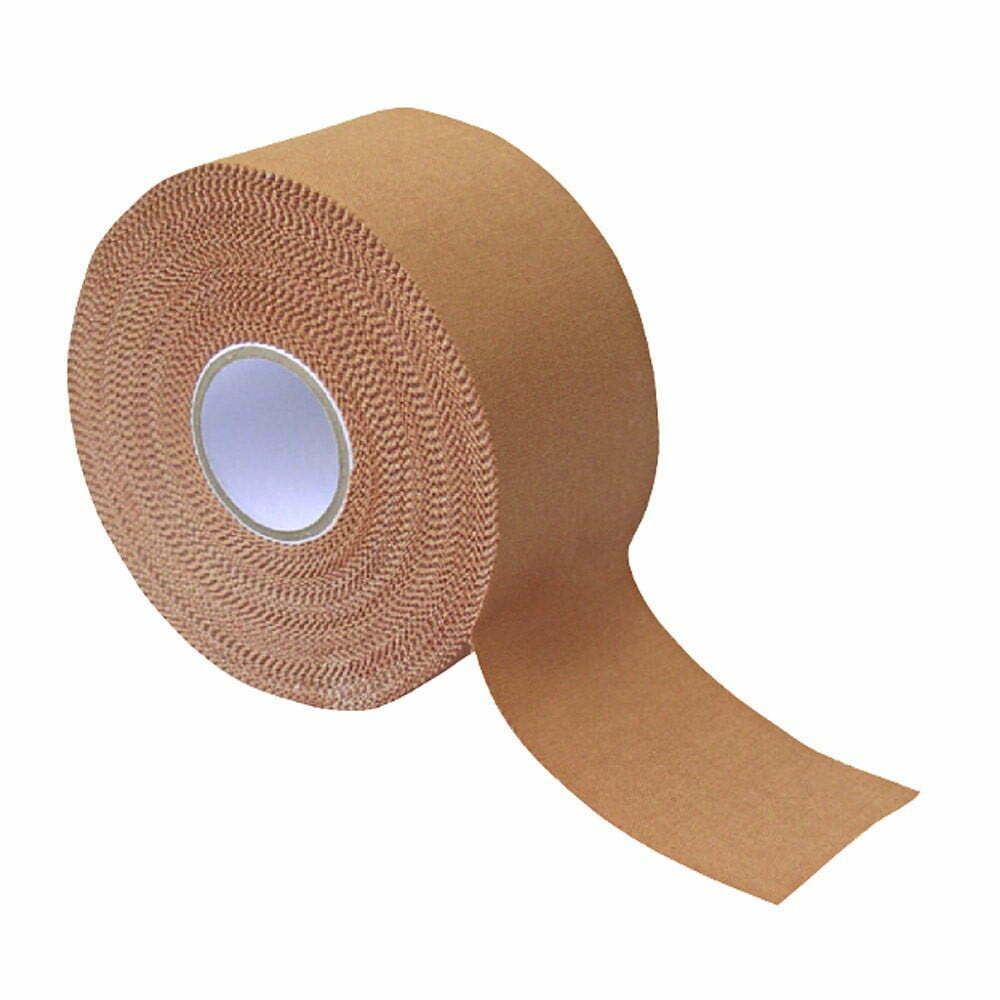
Rigid tape is a rather strong tape that’s used for securing joints during any physical activity. It’s pretty similar to zinc oxide tape, but it’s not made up of cotton fabric. Instead, it uses cellulose fiber or rayon as its base, but with the same zinc oxide glue and serrated edges.
It’s called rigid because rayon is much stronger than cotton, even if it is woven or not. Even when it has a stronger weave, it still has its drawbacks. Sure, it won’t break as easily, but it’s harder to layer on your skin if need be. Cellulose doesn’t roll up as well as cotton.
Much like its counterpart zinc oxide tape, it will tear off any hair on your skin and it’s not waterproof. But, because of its rigidity, it’s much easier to hand-tear this tape yourself.
Elastic Adhesive Bandage
Elastic Adhesive Bandages (EAB) got their extra flexibility from the inclusion of elastic with the cotton. The adhesive itself will be acrylic or a latex-based glue. It’s great for compression, but it’s rather harsh on the skin. It’s still a bit more water-resistant than other zinc oxide tapes.
The tape’s edges are different because they can either be woven or nonwoven. Either way, it’s difficult to tear the tape by hand. In terms of EAB tape with woven edges, it might not wrap around as well as the nonwoven kind. Woven edges work best when wrapped around evenly sized places. So, for instance, during a scrum in a rugby match, you can see that some bandages on the players’ legs bunch up around their ankles. To avoid this, they prefer to use EABs with nonwoven edges. There’s also a distinction between low adhesion and high adhesion EAB.
Low Adhesion Elastic Adhesive Bandage
This Elastic Adhesive Bandage is considered low adhesion because of the strength of the glue. It’s not as heavy as the high-adhesion kind. With that being said, it’s quite decent at adhering to itself, perfect for compression.
The present plastic backing and center line aid in the consistent layering of the bandage. Along with its open edges and cardboard core, the elasticity makes it easy for the bandage to stay the same shape. It’s also breathable because of how porous it is.
High Adhesion Elastic Adhesive Bandage
This High Adhesion EAB has the same unwoven edges as the low adhesion kind. Their main difference is the amount of glue present in the bandage. Since it’s rather heavy on adhesive, this bandage can stick to the skin even when it’s wet.
It also has a center line but with a paper backing instead of plastic. As for the core, it’s the opposite. It has a plastic core which makes unrolling the bandages effortless. Together with the superior glue strength, High Adhesion EAB is the superior option.
Cohesive Bandage
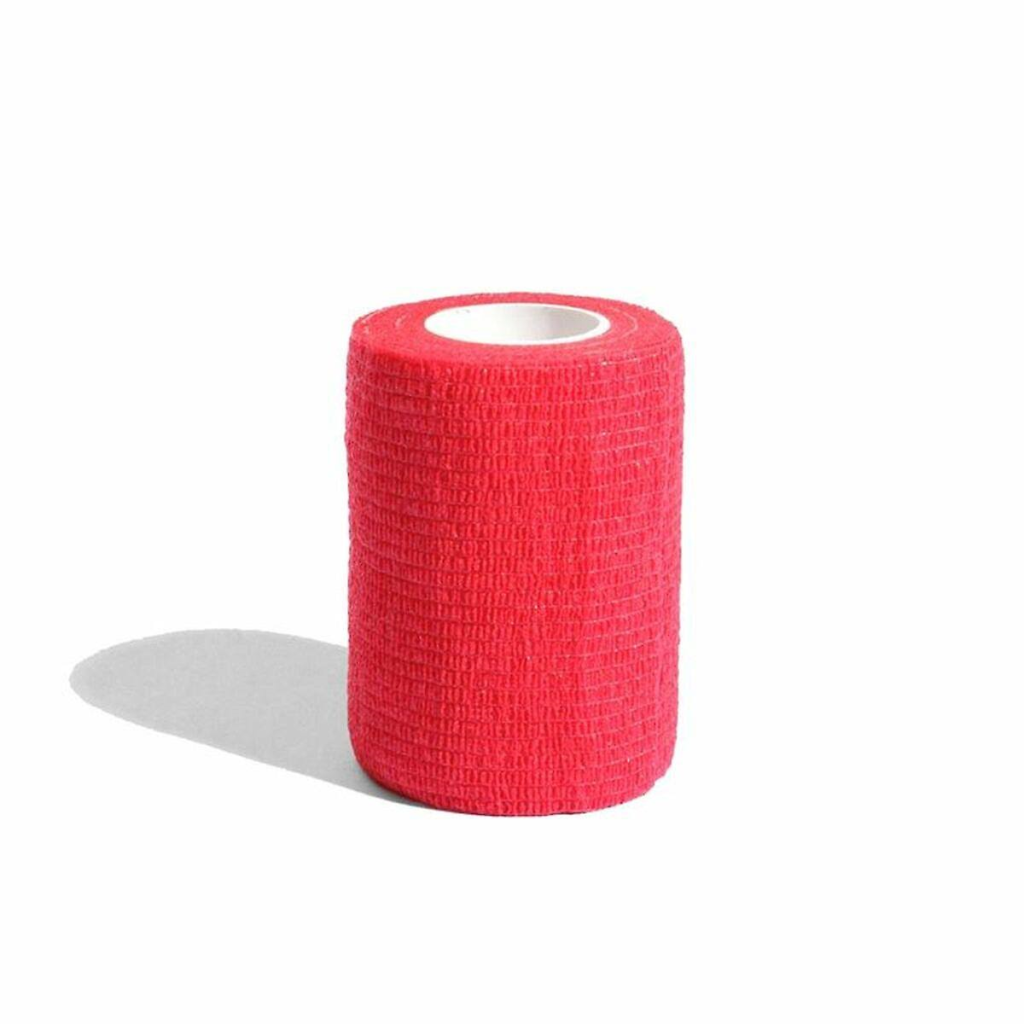
Cohesive bandages are a blend of several unwoven materials, such as cotton, yarn, polymer, and even latex. This bandage has a very light layer of glue, so it doesn’t cling to your skin or hair. Also known as a self-adhering bandage, it sticks very well on itself.
While it doesn’t pull at your hair, its compression strength is not that high either. You’ll have to use multiple layers for more support. It’s a good thing that it’s semi-reusable.
Tear-Light Tape
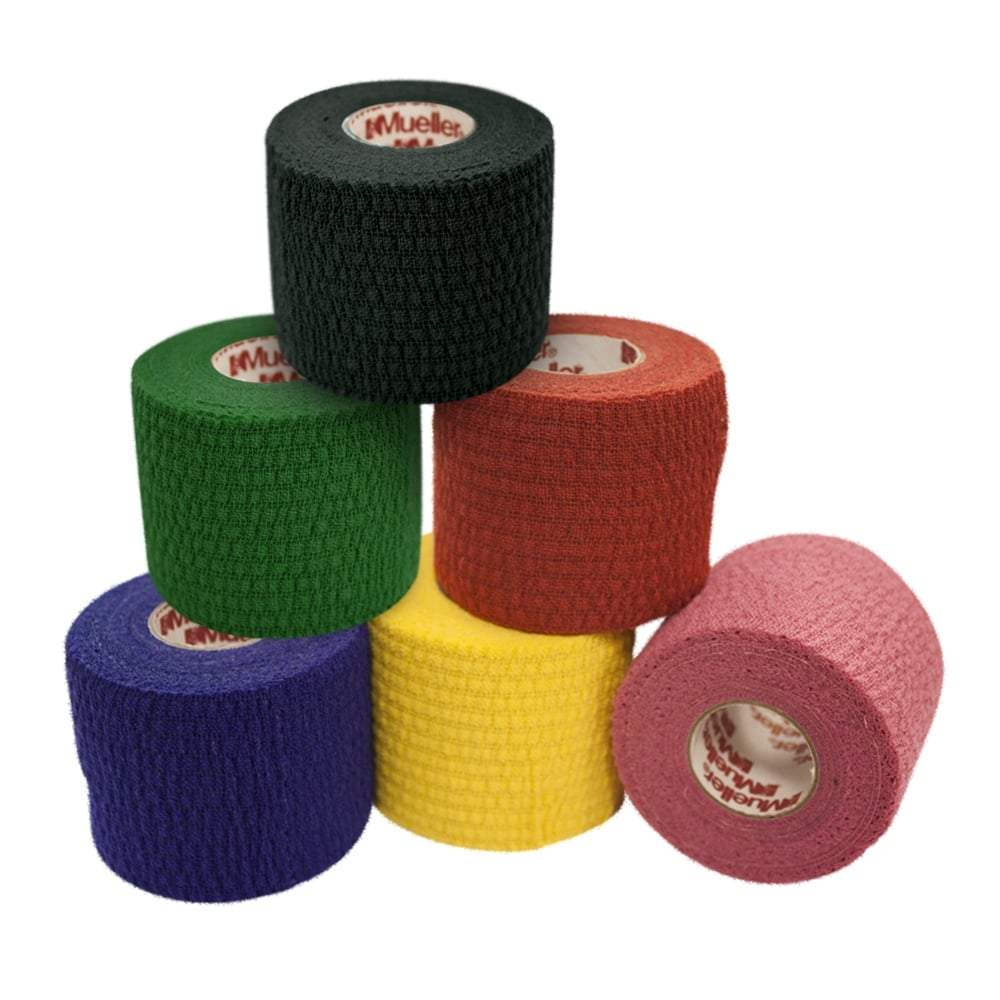
Tear-Light tape is like a lighter version of elastic adhesive bandage. If you combine the properties of EAB with a cohesive bandage, you’ll get the tear-light tape. Typically, it has an unwoven and elastic cotton base. In addition, you can tear this tape easily by hand.
Considering the lighter fabric, it’s not as strong as a regular EAB. Just like EAB, it’s not that waterproof and it can tear your hair out.
Additional Types of Bandages
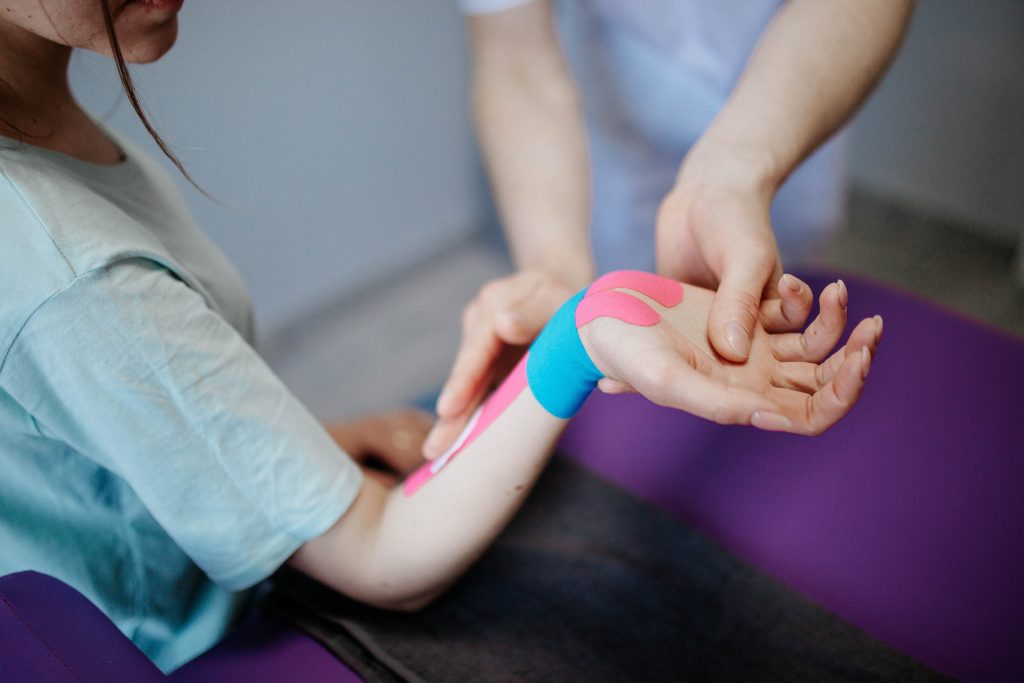
Apart from the main types of adhesive sports medicine bandages, you can also look through a variety of non-adhesive or non-compression ones. You can use the following on their own or with the adhesive bandages, depending on the need:
Underwrap
Underwrap is a pre-tape bandage. It means you put it on your skin before applying a layer or two of your chosen adhesive bandage.
It’s rather lightweight and thin. It’s made up of foam instead of cotton. The purpose of underwrap is comfort, after all. Not all sports medicine tapes are comfortable. The presence of underwrap will help you avoid any chafing or hair loss.
Gauze Bandage
Gauze bandages are the more common type of bandages you can get from any pharmacy or medical supply store. There are already gauze bandages in any available first aid kit.
Generally, gauze is not elastic, It’s entirely made up of cotton. To apply, simply roll around the affected area and secure it with clips or tuck it in itself. If you do have other adhesive tapes available, you can use that as well.
PBT Bandage
PBT bandages has polyester or polyamide as its base for elasticity. It’s a rather useful compression bandage, and it’s soft while being strong. You can wear them for longer periods without any additional skin irritation.
Your go-to way of securing this bandage on is to knot it or tuck in the ends. This bandage is washable, and even reusable when used properly.
Crepe Bandage
Crepe bandages are an older style of bandage that still doesn’t have any adhesive to it. It’s used for compression, but you’ll need to use the provided clips to wear them properly. Because of this, you rarely see them in various sports activities.
With regular wraparound bandages, they’re not that secure. In any rigorous sport, a player runs around a field or court. There’s a high chance that the clips would fall off. Players would prefer using adhesive or cohesive bandages in this regard.
High Elastic Bandage
Lastly, there are high elastic bandages. These bandages are fully elastic so it’s not solely made up of cotton. They usually are made up of a blend of cotton, rubber, and polyester, or just rubber and polyester. It can also come with one or two metal clips.
High elastic bandages are thicker than crepe bandages, but they still can’t adhere to anything all on their own. Using zinc oxide tape over it does help it stay in place if you wish to use it.
KT (Kinesiology) Tape
Unlike most types of sports medicine tapes and bandages,kinesiology tape is used for different purposes. It’s actually because it gives the opposite of compression. It lifts your skin a bit. This way, it gives your tissue some room from your skin. It reduces swelling and irritation and improves your circulation.
The base is made up of a nylon-cotton blend for extra elasticity, with acrylic glue. It’s water-resistant and durable, lasting up to 3 days. You can even wear it while you’re in the shower. It will hurt when you remove it though. It’s a good thing it’s already pre-cut.
What are the most common types of tape used in sports medicine?
Generally, there are two main types of tape commonly used for sports medicine. First, Elastic bandage tape, which is for consistent pressure application and wound management. It helps control swelling while still allowing movement.
The second common tape is kinesiology tape. It is used for muscles, ligaments, and tendons, which can provide lightweight support to control the body part as it heals.
It’s (About) A Wrap
By now, you have a good grasp on which one you should use. Below, you’ll see two tables depicting the main differences between them. Happy hunting!
| Types of sports medical tape | What is it made of? | Is it waterproof? | Is it hand-tearable? | Does it tear off your hair? |
| Zinc Oxide Tape | Cotton bandage with zinc oxide glue | Not really | Yes | Yes |
| Rigid Tape | Rayon bandage with zinc oxide glue | Yes | Yes | Yes |
| Elastic Adhesive Bandage | Cotton and elastic blend bandage with an acrylic or latex-based glue | More than zinc oxide tape | No | Yes |
| Cohesive Bandage | Cotton, yarn, polymer, and/or latex blend bandage with an acrylic-based glue | A little bit | A little bit | No |
| Tear-Light Tape | Cotton and elastic blend with a rubber-based glue | Not really | Yes | Yes |
| Additional types of bandages | What is it made of? | How to use it? | Does it irritate your skin? |
| Underwrap | Foam | With another type of tape | No |
| Gauze Bandage | Cotton | By itself or with another type of tape | No |
| PBT Bandage | Polyester/polyamide | By itself or with another type of tape | No |
| Crepe Bandage | Cotton | By itself or with another type of tape | No |
| High Elastic Bandage | Cotton, rubber, and polyester blend, or rubber and polyester blend | By itself or with another type of tape | Maybe |
| KT (Kinesiology) Tape | Cotton and nylon blend with an acrylic-based glue | By itself | Yes |
Taping Tips and Recommendations
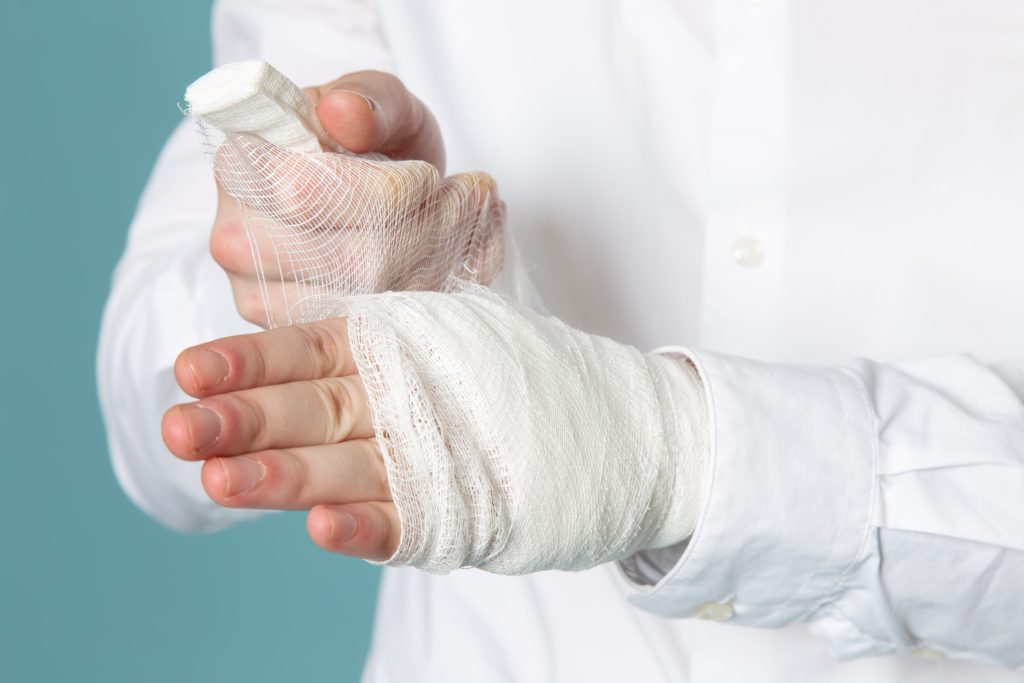
Even with the bandage or tape of your choosing, you’ll still need to know a couple of things like the ones below before you use any of them:
- If you’re still not sure which bandage is the best for your circumstances, you can always contact a medical professional like a physiotherapist for further guidance.
- When using non-adhesive bandages, you can layer adhesive tape like zinc oxide tape over it to make it secure.
- Another surprising tape you can layer over either your non-adhesive or adhesive bandages is electrical tape.
- To lessen the pain and/or hair loss, spray the bandaged area with rubbing alcohol or a tape remover spray first. Douse the bandages until it’s soaking wet before taking them off as carefully as you can.
In Conclusion
There are so many types of sports medicine tapes in the market. If you’re confused about which you should use for your next meet, we have you covered.
The five main types of sports medicine tapes are zinc oxide tape, rigid tape, elastic adhesive bandage, cohesive bandage, and tear-light tape. Generally speaking, they’re not all waterproof or hand-tearable. But, each one of them has different levels of compression and adhesion.
The other bandages (underwrap, gauze bandage, PBT bandage, crepe bandage, and high elastic bandage) won’t irritate your skin. The underwrap can stick a bit, but the rest won’t. You can use either clips or an additional layer of tape over them. As for KT tape, it sticks so that your tissues have room to breathe.
The main goal of each tape should be based on you and your needs. Weigh the pros and cons regarding your purpose. When you choose the best one for you, you won’t have any problems in the long run.

